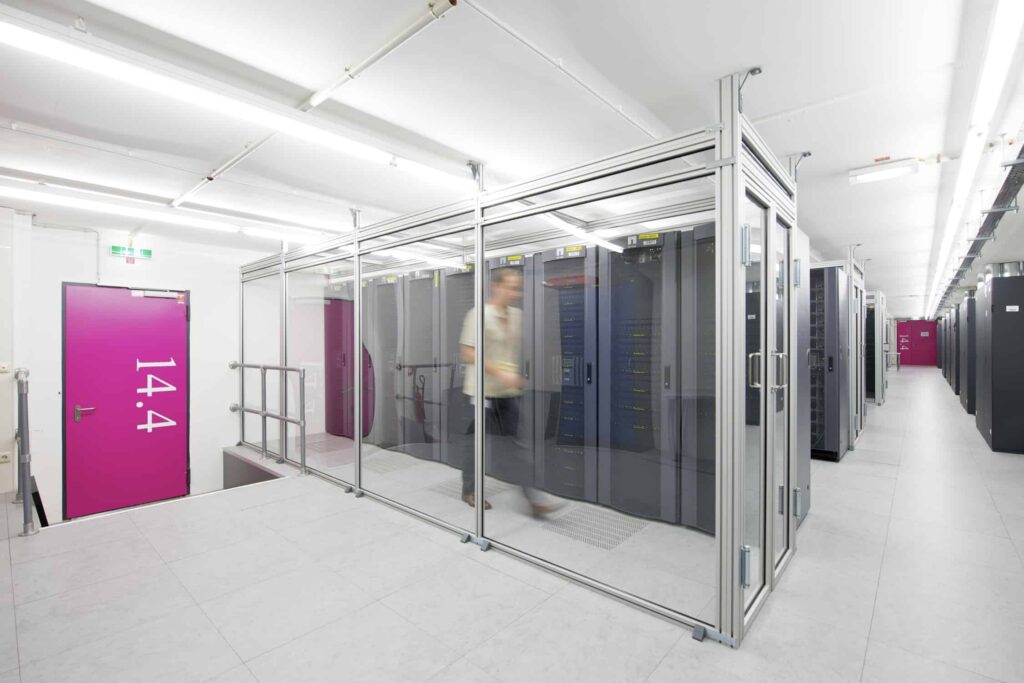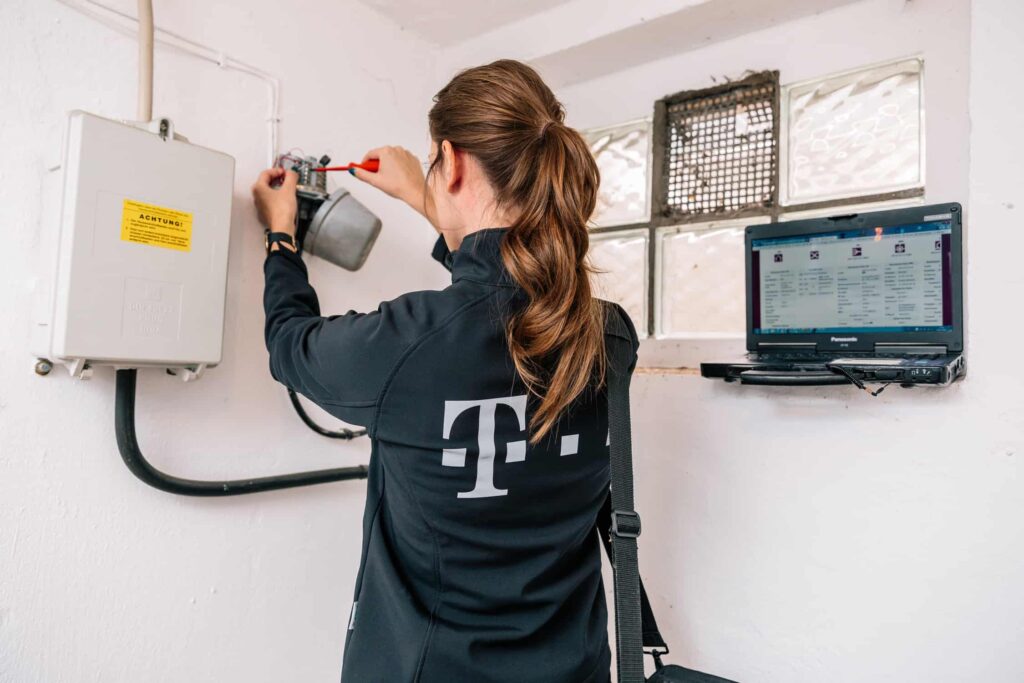Borislav Tadic, Vice President BMS & Transformation DRC, explores how a major digital transformation of Deutsche Telekom has enabled greater customer experience and significant technological advancements.
This interview featured in August’s issue of Interface Magazine – read now!
Tell us what your role is and how it fits into the wider Deutsche Telekom strategy?
I’m Vice President at Deutsche Telekom, responsible for board member support and transformation of the board area, data privacy, compliance and legal, working here in the Bonn headquarters of Deutsche Telekom Group. We as Deutsche Telekom Group are present in 50 countries and I would say are definitely a leading European telecommunications brand. We hope, after our mergers and acquisitions in the United States that we’ll become an even bigger player on a global level.
How important is it in your position to continue to learn?
That’s a fantastic point. One thing I try to do is constantly improve on an individual level. That includes formal education. I have at least 10 internationally recognised certifications and I’m currently working on my PhD in parallel to my work and I use numerous non-formal opportunities to expand my knowledge, both in the formats offered in the company and outside as well as through reading and keeping up to date with the latest developments every day, every morning.
That attitude is something I try to include in our transformation programs. For example, during the past two years, we’ve up-skilled more than 1000 employees off this board area, both in Germany and internationally, in several ways. First, offering them online learning content on our intranet platform, creating awareness about the different digital courses we have in the context of Deutsche Telekom, which are focused on their profession. We also continue to learn about global technological developments, so they can understand the new trends and developments in the industry so that they can better advise and/or support their customers.
From there we went a step forward and decided not only to offer them in a digital format, which is easy to implement and easy to offer and cost-efficient but also to enable a knowledge transfer. This is through our Digital Future Campuses in Athens and here in Germany. Several hundred people and experts from different functions of our board area were brought together and we educated them in areas such as broadband development, 5G, agile working, international collaboration, diversity and many other topics which directly or indirectly contribute to their performance and to their daily jobs. Satisfaction rate on the company level was one of the best in the recent history of Deutsche Telekom, with 96 to 99% participant satisfaction with the program.

A transformation of any kind breeds challenge, what are some of the challenges you have faced?
It is a challenge indeed. The first aspect of the challenge is that you have to give or convey as much knowledge as possible in a relatively short time and of course to make the knowledge current because if you prepare a course around blockchain and you prepared it two years ago, today you would need a completely different base. The pace of change with regards to the content, which you create to educate someone, is very high. It’s important that you stay up to date in the preparation and delivery of these courses.
Even that aside, you have a limited budget and this limited budget has to be approved and/or aligned with our human resources area. We are working with them closely because of course they have way more transparency about the needs of every individual employee and we have of course our professional view and vision where we want to be as a group. We basically worked with our colleagues from HR and with our expert groups in identifying which areas we need to focus on because you have hundreds of areas, especially in our fast-changing, fast-paced business around digitisation and technology.
After we finalised that, we created a program and then the next challenge was how to get the best possible lecturers and best possible experts to share the knowledge, because of course, their time is limited. There are of course budget limitations and numerous other restrictions including language barriers. We tackle that by trying to find the best in-house experts in some areas and external partners for others. They have more experience in some domains that are relevant to us. Then there is the delivery.
Even if you organise a format that consists of online courses as well as the physical presence of a course for several hundred people, that’s not an easy task. It sounds like an easy task; it’s just an event with a couple of hundred people but no, this is multi-partner, multi-party interactive session with numerous choice options because not everyone gets the same program. The people choose the modules and you have to fit all of that together. These are some of the challenges we’ve hopefully successfully tackled.
How do you ensure that your transformation is done so with the customer experience in mind?
That was the essence of our program and it’s a great question. First, we understood that we cannot only assume what the customer wants, we need to know what the customer wants and the only way to do that is to talk to the customer. As a governance function, we went and talked to the customers. We went out and spoke with actual private customers and business customers of Deutsche Telekom and asked them: what can we, from security, from privacy, from legal, from compliance, do differently in order to make your life better and easier?
We got our feedback. It was extremely good feedback, in the sense of many concrete, actionable points we can implement. For example, one of them was to simplify terms and conditions. When you sign a contract anywhere, for any mobile service, TV service or anything else we offer, you need to read through the pages of the contract documentation. This document is written mostly with the small letters, small font, explaining what will happen in case of some emergency escalation or conflict etc. It’s written in a language that no one understands but it was always the intention of Deutsche Telekom to make it fully understandable to our customers. We were doing our own efforts but when you speak directly to the customers, he can explain to you, which paragraphs are not easily understood or interpreted.
We used that feedback to simplify the terms and conditions for our major products. We did that within a couple of months and now we have one of the best, if not the best terms and conditions document, which is now standard. This raised the trust with our customers because they know that Telekom is fully transparent and wants them to understand what they are signing and what they are changing with their contract situation. This is only one example of numerous changes we did to the direct discussions with external customers.

How important is transparency to a company like DT?
When you look at how you can make it more transparent and when you simplify the processes and the policies, the documents, when you’re directly communicating your goals and why you are doing certain things, this raises the trust of the customers. But of course, many digital tools can also help you to raise that transparency. For example, you can do it for ethical reasons. We have been very successful in advancing customer demands through a chatbot. It became so good that some of the customers didn’t even know that they were being served by the chatbot. Because it answered all their questions in the manner that they would expect from a live person, but we still, from an ethical perspective, decided to include the sign notification saying: “You’re speaking with our digital assistant, not with a real person.”
We’ve also introduced specialised tools both internally and externally. As an example, we have a data privacy cockpit that enables you to log in as a customer of Deutsche Telekom and basically see which data you have approved or are sharing with both Deutsche Telekom and you can also click and approve or disapprove with us sharing that data with other parties. We are very strict with that. This is one of the parts of our unique selling proposition; we’re extremely careful with the data of our customers. What we want to achieve is for customers to no longer need to call or send an email to understand which data of theirs is in the system and which can be shared, but they also can log in with their mobile or fixed device and look and choose and change the categories at any time, through a very useful and user friendly interface.
Around 10 years ago, through internal experiences, we realised that this could become something we are known and recognised for, and so we decided to really invest internally into data privacy, security, compliance to strengthen our legal functions, to strengthen our audit functions. We did this in order to create a system that not only gives assurance to our shareholders but also to all of our customers. We don’t do it because we must; we believe that there is clear value in data being handled in an ethical and responsible manner for our customers.
How difficult is this with regards to DT’s presence across 50 countries?
First is that we look at all of our footprints holistically where, if we have a high standard which is not producing a significant change in the product pricing or service pricing, we look to apply it throughout the whole footprint. In the area of compliance, security, privacy and risk management, we are applying the highest standards worldwide.
The challenge here is that you have certain local changes which happen and which of course demand us to stay on the ball in that we are always in contact with our local counterparts which are responsible for these areas where the board area is active and not only upscale them, not only to make them aware of the customer demands both locally and internationally, but also to always make sure that they’re applying the latest, leanest standard and the process to keep the high levels of these services.
How will you continue to grow and transform? Can a transformational journey ever really end?
There is no endpoint. You’re absolutely right; the transformation will never stop and should never stop. It’s a process of continuous improvement of the organisations and individuals and customers’ demands, markets. Everything is changing, so we need to keep changing constantly. I think it’s very important to say in the sense of the role you mentioned is that you also lead by example, not only me but also my colleagues and other senior executives. They need to be aware that if we are promoting a tool to be used or a process to be simplified, we have to start with ourselves.
They’re extremely important, these change processes, because it’s not sufficient only to upscale, to implement the customer demands and to digitise and introduce digital tools. If you want the whole organisation to have a sane and a good mix of agile projects and waterfall projects, I need to show that some of my projects in the digitization context are being run agile.

What do the next 12 months look like for DT?
We’re going to focus on new skills. Let’s say that we are going to further explore what the blockchain is bringing. We are going to further explore what the changes are, not only technologically, but also the social changes related to 5G. In addition to that, we want to further explore AI and also further explore digital ethics. We are going to be active in the corporate digital responsibility domain where we, as Deutsche Telekom, are very much pioneering some of the elements here in Europe, so this is definitely going to happen.
What makes a successful CTO?
I would say surround yourself with extremely diverse people because diversity is not only diversity in the context of having different people with different backgrounds around yourself or different religions, different genders, different ages, etc., but also diversity in the opinion context, and the context of thoughts. And when you’re surrounded by such people, try to be like a sponge.
Try to take as much input as you can to process this and put it into the context and to continue changing because if I would apply what I learned at let’s say in the university or what I’m learning now for my PhD, that might be okay for a certain period of time, but the world, technology and the market is changing with extreme pace. So, you have to be fully aware that this will continue changing so your adaptability is the key. Your curiosity is the key and if you keep that, I’m sure that you’re basically ensuring that you’ll be successful today and tomorrow.











